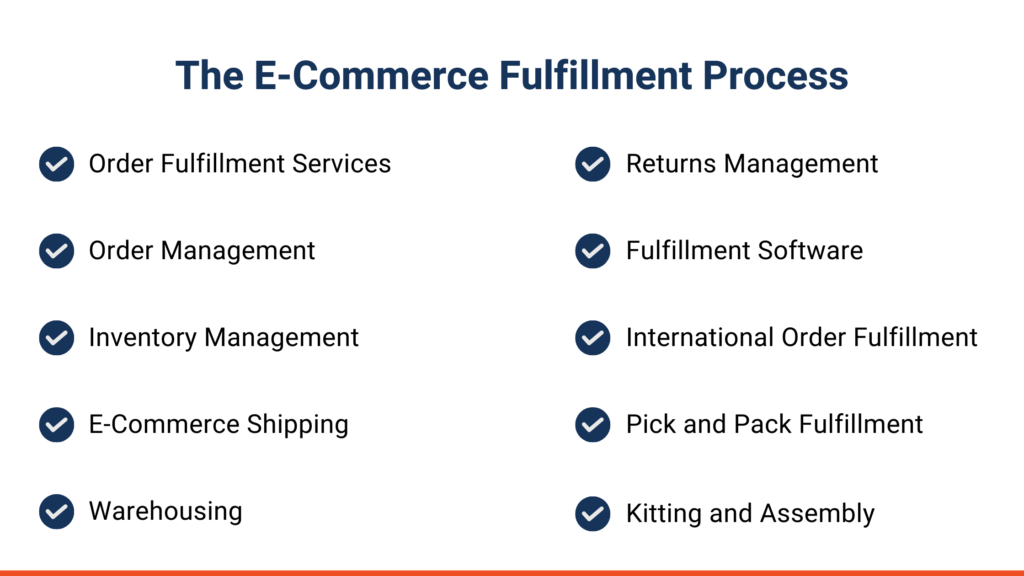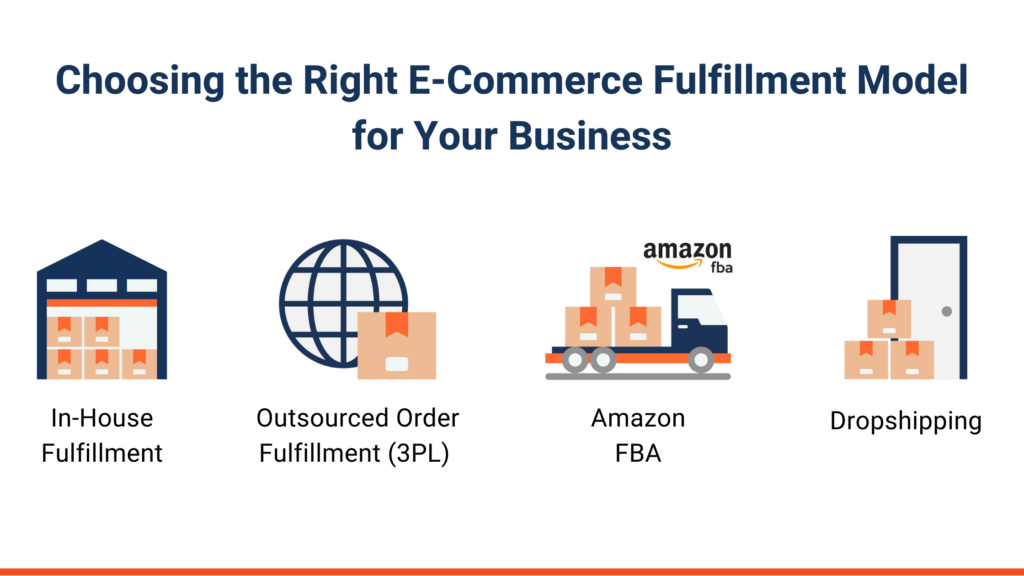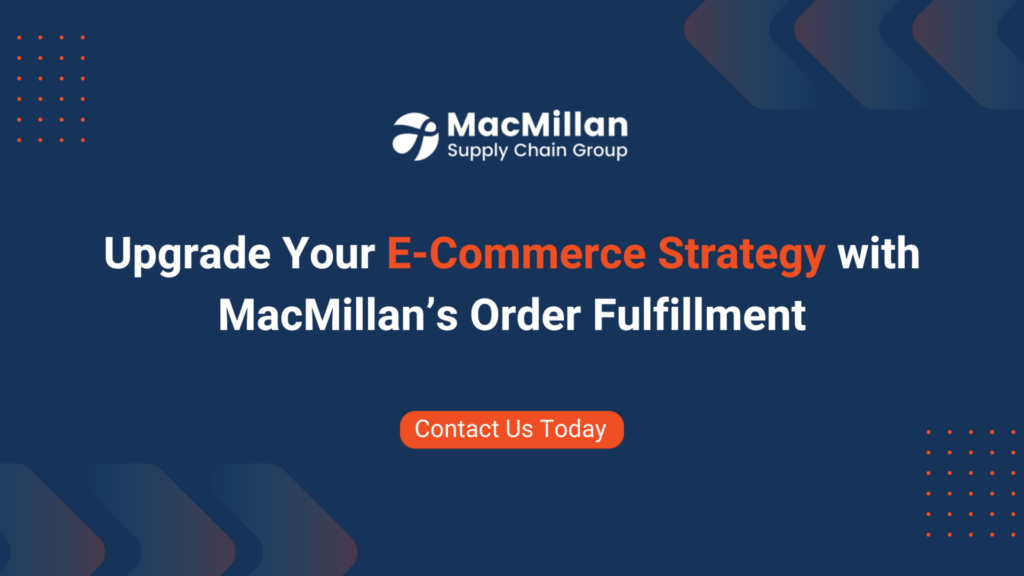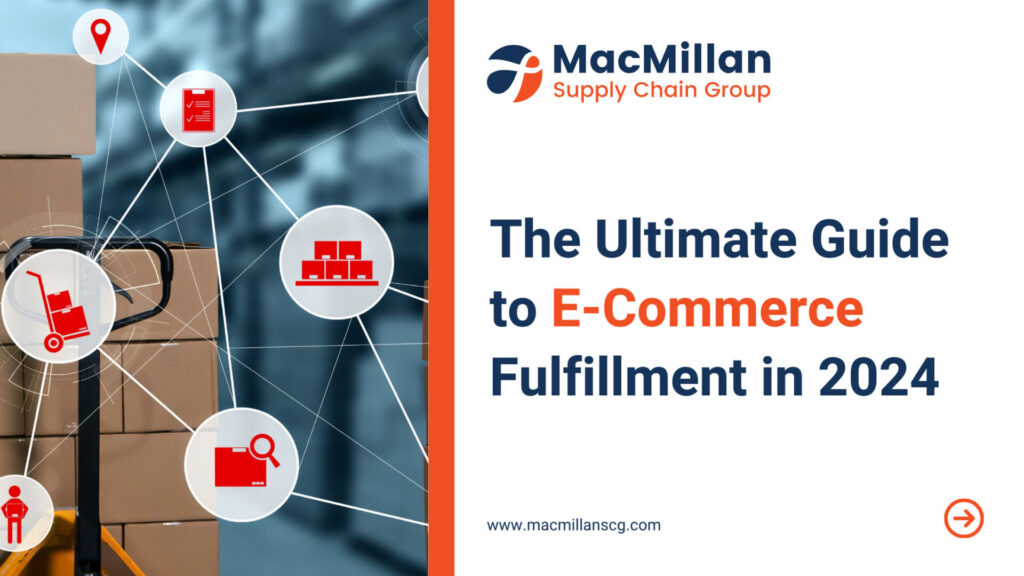If you’ve ever wondered why some online stores thrive while others struggle, the secret often lies in how they handle order fulfillment. Did you know that 48% of online shoppers will abandon their carts if delivery takes more than a week? These stats highlight the importance of efficient e-commerce fulfillment.
Effective e-commerce fulfillment is not merely a logistical requirement but a vital element in fostering customer satisfaction and facilitating business growth. It involves establishing a seamless connection between your products and customers, thereby ensuring that each order not only fulfills a need but also reinforces the strength and reliability of your brand.
In this blog, we will explore the fundamental aspects of e-commerce fulfillment, aiming to assist you in optimizing time efficiency, minimizing costs, and enhancing customer satisfaction.
What Is E-Commerce Fulfillment and Why Does It Matter?
E-commerce fulfillment is a critical section of your supply chain, involving the reception of bulk goods, the storage of stock-keeping units (SKUs), and the execution of order processing, which includes picking and packing, as well as the delivery of products to customers. The key processes in this segment include:
- Inbound Shipments: E-commerce fulfillment facilitates the arrival and placement of products on shelves in e-commerce fulfillment centers.
- Warehousing and Storage: It strategically stores SKUs in inventory for future orders.
- Order Fulfillment: It involves the meticulous process of selecting and packaging orders for dispatch.
- Order Delivery: The shipping phase is where orders are transported to customers.
- Reverse Logistics: Managing the returns process and ensuring efficient handling of returned goods.
E-commerce fulfillment involves ensuring that products are stored correctly, orders are processed efficiently, and customers receive their purchases promptly and in good condition. Good fulfillment practices can lead to happier customers and more successful business operations.
The E-Commerce Fulfillment Process

- Order Fulfillment Services
This fundamental service encompasses the selection, packaging, and dispatch of products to customers. Specialist 3PLs, such as MacMillan, enhance this process, ensuring efficiency and effectiveness for e-commerce entities.
- Order Management
This involves the tracking of all customer orders. It includes monitoring the status of each order, analyzing customer purchasing patterns, and managing inventory levels to prevent stock shortages.
- Inventory Management
This crucial step involves the administration of a business’s product inventory. It encompasses the storage, replenishment, and estimation of required stock levels, aiming to perfectly balance supply with customer demand.
- E-Commerce Shipping
Shipping is the method of product delivery to customers. It varies depending on the origin and destination of the shipment, the nature of the products, and the desired speed of delivery. Businesses range from self-handling shipments to collaborating with carriers for optimized rates.
- Warehousing
This refers to the storage of products prior to their purchase. Warehousing solutions can range from modest in-house storage to extensive warehouse facilities, with a focus on maintaining product safety and organization.
- Returns Management
This process involves the handling of returned merchandise, including its receipt, inspection, and reintroduction into available inventory. Given the nature of online shopping, an efficient returns process is vital.
- Fulfillment Software
This technology streamlines the fulfillment process by linking e-commerce platforms with fulfillment centers. It provides real-time updates on orders and inventory, and can strategically allocate orders to the most suitable fulfillment center.
- International Order Fulfillment
This pertains to the fulfillment of orders for international customers, a process complicated by varying international regulations, tariffs, and taxes. Collaboration with experienced fulfillment providers is advisable to navigate these complexities.
- Pick and Pack Fulfillment
This operation involves retrieving items from storage and preparing them for shipment upon receipt of an order. Efficiency in this process is key, whether it involves batch picking or specialized packing stations.
- Kitting and Assembly
Employed for products that require specific assembly or arrangement before shipping, this service involves additional steps such as the combination of various components, which may require more time and resources.
Each of these components plays a pivotal role in the smooth operation of an e-commerce business, contributing to overall efficiency, customer satisfaction, and business growth.
Choosing the Right E-Commerce Fulfillment Model for Your Business

1. In-House Fulfillment
This approach involves the complete management of the fulfillment process internally, ranging from utilizing a modest space like a spare room for initial storage to potentially expanding into a full-scale warehouse as the business grows.
Why choose it?
- Autonomy in Operations: It provides the freedom to manage every aspect of the fulfillment process, ensuring each order adheres to the highest standards set by the business.
- Personalized Customer Experience: It offers the opportunity to customize packaging and include unique additions such as thank-you notes or promotional items, thereby enhancing the overall customer experience.
- Operational Flexibility: Enables the ability to make swift modifications to orders and address customer-specific requests or concerns promptly.
Considerations:
- Scalability Challenges: Increasing order volumes can place substantial demands on both time and space, potentially impeding the business’s ability to grow effectively.
- Resource-Intensive: Requires significant investment in physical space, equipment, and staff. Managing logistics can become a complex task that diverts attention from other business areas.
2. Outsourced Order Fulfillment (3PL)
Outsourced order fulfillment, commonly known as Third-Party logistics (3PL), involves delegating the entirety of supply chain management to external logistics providers. Companies like MacMillan assume responsibilities for storing, selecting, packaging, and dispatching products.
Why choose it?
- Access to Expertise: Engaging with a 3PL provider allows businesses to benefit from their extensive experience and specialized resources, leading to more streamlined and professional fulfillment operations.
- Scalability: 3PL services are inherently scalable, efficiently accommodating an increase in order volumes without necessitating additional investment in space or personnel by the business.
- Cost Efficiency: Utilizing a 3PL can result in significant cost savings due to their ability to leverage economies of scale, potentially reducing shipping and other logistical expenses.
- Flexibility and Adaptability: 3PL providers are designed to adapt to the changing needs and growth patterns of a business, ensuring that demand fluctuations do not disrupt operations.
Considerations:
- Oversight and Control: Outsourcing may lead to reduced direct control over daily fulfillment activities, which could be a concern for businesses with highly specialized or unique product offerings.
- Reliance on Provider Performance: The efficiency of fulfillment and overall customer satisfaction become heavily dependent on the 3PL provider’s performance, underscoring the importance of selecting a reliable partner.
- Integration Requirements: Effective collaboration with a 3PL provider necessitates the integration of business systems, which may require time and effort to establish and maintain.
3. Amazon FBA
Fulfillment by Amazon (FBA) is a comprehensive service where merchants send their inventory to Amazon’s fulfillment centers. Amazon then assumes responsibility for storage, packaging, shipping, and customer service.
Why choose it?
- Broad Reach: Gain access to Amazon’s massive customer base and the coveted prime shipping options, potentially increasing sales.
- Convenience: Seamless integration with Amazon’s marketplace makes managing sales and fulfillment straightforward.
Considerations:
- Compliance with Amazon’s Standards: Merchants must conform to Amazon’s specific guidelines, including restrictions on inventory size and storage duration.
- Potential High Costs: FBA may incur substantial costs, particularly for products with lower turnover rates or those that are larger and more cumbersome.
4. Dropshipping
The retailer facilitates the sale of products without physically possessing or managing the inventory. This process eliminates the need for the retailer to maintain a physical stock of products, as they act primarily as an intermediary between the supplier and the customer.
Why choose it?
- Low Startup Costs: This model requires minimal initial investment, as there’s no need to purchase inventory upfront or pay for storage space.
- Simplicity: It simplifies the logistics process, as businesses are not directly involved in the shipping or handling of products.
Considerations:
- Profit Margins: Typically, dropshipping offers lower profit margins compared to other models, as you share profits with the manufacturer.
- Limited Control: Retailers have less influence over shipping durations and product quality, which may affect customer satisfaction levels.
Each e-commerce fulfillment model offers distinct advantages and challenges. Your choice should align with your business size, growth trajectory, resource availability, and how much control you want over the fulfillment process.
E-Commerce Fulfillment Models: A Comprehensive Cost Analysis
When it comes to e-commerce fulfillment, the costs can vary significantly depending on the model you choose. Here’s a brief look at how each model can impact your overall fulfillment expenses:
| Fulfillment Model | Inclusive Features | Cost Implications |
| In-House Fulfillment | Managing inventory, storage, picking, packing, and shipping yourself. | High costs due to the need for storage space, inventory systems, staff training, and courier partnerships. Costs escalate as the business grows. |
| 3PL Fulfillment | Partnering with a third-party logistics provider for fulfillment needs. | More cost-effective than self-fulfillment. Fees are based on inventory and storage used, reducing overhead and labor costs. Proximity to customers can further decrease shipping costs and times. Ideal for scaling businesses. |
| Dropshipping | Suppliers handle shipping, storage, and processing; no inventory is owned. | Low initial overhead and upfront costs. However, complexities and costs can increase with business expansion, especially when coordinating with multiple drop shippers. |
| Amazon FBA | Utilizing Amazon’s fulfillment services, including storage, picking, packing, and shipping. | Amazon charges a 15% seller fee on each product sold, plus inventory storage fees (monthly and long-term), fulfillment fees per unit (standard and oversized), and additional fees for apparel and inventory removal. Costs can be significant, especially for larger inventories and long-term storage. |
How to Choose the Best E-Commerce Fulfillment Model for Your Business
The best fulfillment model depends on specific business needs and growth stages:
- For small startups or businesses with unique products: Self-fulfillment can be advantageous due to the control it offers over the entire process, especially when the product range is unique or requires special handling.
- For growing and scaling Businesses: 3PL e-commerce fulfillment providers like MacMillan are often the most suitable choice. They offer scalability and cost-effectiveness without the need for extensive investment in logistics infrastructure. Businesses can leverage the expertise and resources of the 3PL provider to focus more on core business activities like marketing and product development.
- For businesses with limited capital or those testing the Market: Dropshipping is ideal. It allows for a wide product offering without significant investment in inventory and logistics. However, it’s less suitable for long-term scaling due to lower profit margins and less control over the supply chain.
- For businesses seeking integrated marketplace fulfillment: Amazon FBA provides a comprehensive solution but at a higher cost, especially for businesses with large inventories or those requiring long-term storage. It’s suitable for those willing to pay for the convenience and reach of Amazon’s platform.
Each model has its strengths and is best suited to different types of businesses and stages of growth. The decision should align with the business’s operational capabilities, financial constraints, and long-term strategic goals.
Choosing an E-Commerce Fulfillment Provider
Deciding on the right e-commerce fulfillment provider is crucial for your business’s growth and customer satisfaction. Here’s a straightforward guide to help you make this important decision:
Indicators for Considering a Third-Party Logistics (3PL) Provider
- Fulfillment Challenges: If the current order management process is proving to be cumbersome, it may be prudent to consider the services of a 3PL provider like MacMillan.
- Space Limitations: A lack of adequate space for inventory storage is a strong indicator of the need for a more expansive and efficient fulfillment solution.
- Scaling Up: For businesses anticipating growth, a 3PL provider can adeptly manage the increase in order volume.
- Customer Needs: If faster shipping is a growing demand among your customer base, a 3PL provider, such as MacMillan, can effectively address this requirement.
Criteria for Selecting the Ideal 3PL Partner
- Geographical Placement of Fulfillment Centers: Choose a 3PL provider with fulfillment centers strategically located to ensure efficient nationwide distribution.
- Expertise in Product Handling: Ascertain that the 3PL provider has the necessary experience and resources to handle your specific product types. MacMillan, for instance, is equipped to manage a diverse range of products.
- Compatibility with Order Volume: Select a 3PL provider that can accommodate your business’s order volume, whether it is large or small.
- SKU Management Capabilities: Ensure that the 3PL provider can effectively manage your range of SKUs, regardless of their quantity.
- Policy on Inventory Shrinkage: Opt for a 3PL provider like MacMillan that offers favorable terms for inventory shrinkage, thereby safeguarding your financial interests.
Choosing the right fulfillment partner like MacMillan can transform your e-commerce operations, enabling you to scale efficiently and meet your customers’ expectations with ease.
Upgrade Your E-Commerce Strategy with MacMillan’s Order Fulfillment

MacMillan stands out for its comprehensive supply chain management and advanced reverse logistics, enhancing customer trust and satisfaction through expert handling of products from arrival to delivery.
Understanding the uniqueness of each e-commerce business, we offer customized solutions tailored to specific challenges and market dynamics. With a focus on sustainability and trust, MacMillan has established a reliable network, positioning itself as a dependable partner in the ecommerce industry.
Elevate your e-commerce fulfillment with MacMillan, where efficient logistics meet a commitment to trust, reliability, and customer satisfaction.




